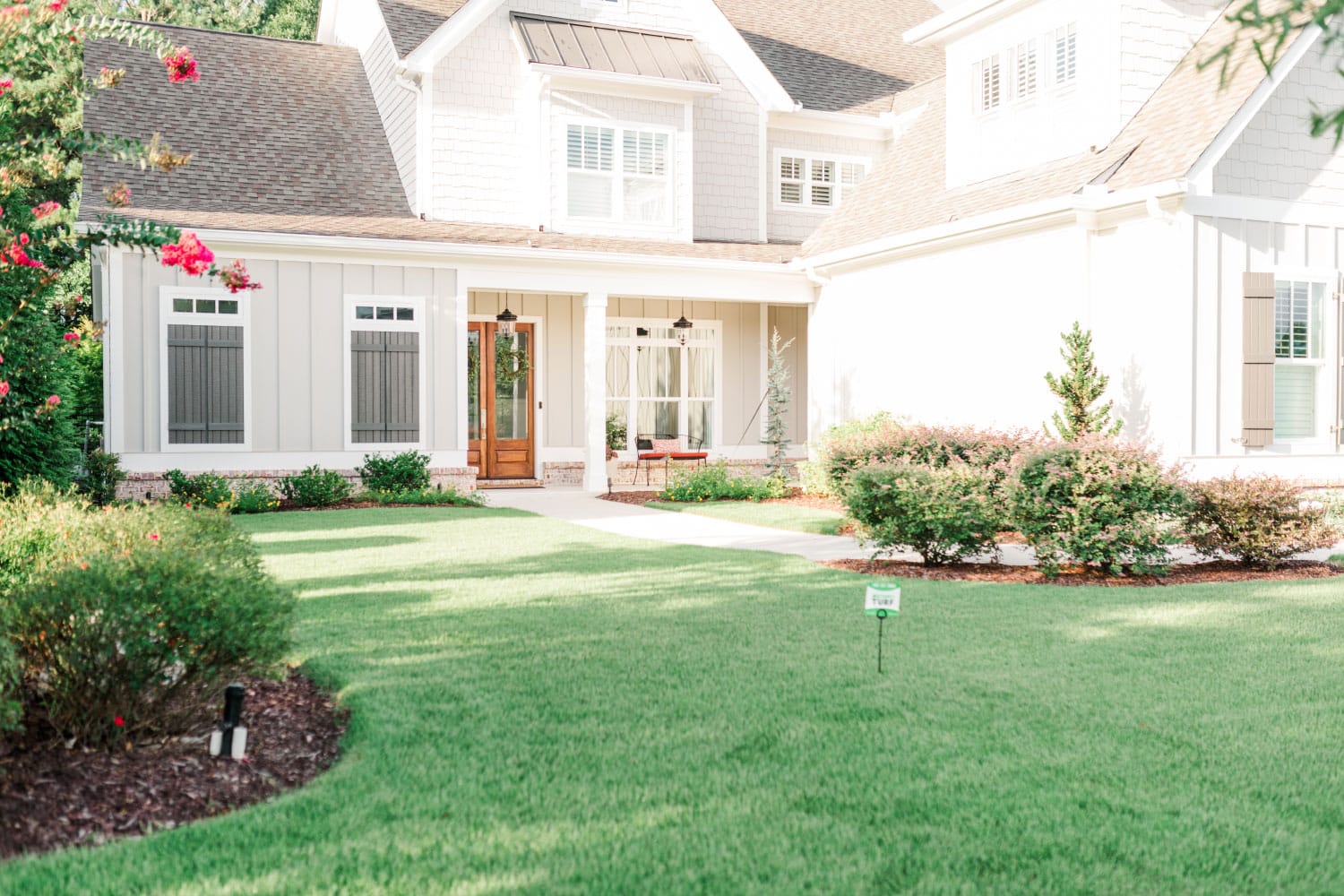The first truly warm day in spring is a welcomed event after a long, cold winter. It reminds us of what’s to come, and if you’re a turf person, it pours coals on the fire we have burning in our minds when we think about a well-manicured lawn. When should the grass be green, though? Can I make my turf green up faster? And why is my neighbor’s yard always green before mine is? Let’s talk about when grass should green up in the spring, whether or not you can make your grass turn green faster, and why some yards green up faster than other yards.
Green Up: The Emergence of Renewed Growth Post-Dormancy
Grass doesn’t actually turn green in the spring; the green that appears in your yard in the spring is new grass emerging. Bermuda and zoysia varieties are warm-season turfgrasses. This means they are hardy and even happy on the hot summer days we experience during summertime. These varieties also have a really great stress response to cold weather: dormancy.
Dormancy for bermuda and zoysia happens for similar reasons why deciduous trees drop their leaves in autumn. The days are short and the temperatures are cold, meaning the opportunity to produce energy is low. While trees and grass don’t have brains, they physiologically know that they will spend more energy than they can make. Instead, they store a bunch of energy and sacrifice the blades when frost occurs. This is when they turn tan.
The inverse is true for green up. Since shorter days and cold temperatures send grass to dormancy, only longer days and warm temperatures can break it. Soil changes temperature much more slowly than air. It has lots of insulated pore spaces, some of which are full of water. It takes long warm days and mild nights to bring the soil temperatures back into a range where roots begin creating new shoots and leaves again. The grass doesn’t actually make the existing blades green again, but rather makes all new ones.
Can I Make My Grass Green Up Faster?
No—The green-up process is solely temperature- and weather-dependent. Different years will create different rates of green up because the weather between two springs can vary drastically. Some springs are long, rainy, and cool. Others are short, dry, and warm.
People often ask if fertilization can change the green-up rate, and the answer is no. While strategic fertilization can help with spring color and tissue formation after dormancy breaks, it can’t accelerate the time our warm-season turfs break dormancy.
Why Is My Neighbor’s Yard Always Green Before Mine?
Environmental conditions between two yards, the species, and the variety of the species can change everything. As such, comparing your yard to someone else’s can lead to frustration and isn’t necessary. Each species can lead to variance in color, visual density, stress response, and will even determine when the yard will break dormancy (and turn green!).
Since breaking dormancy is dependent on ground temperatures, the first places to break dormancy are in full sunlight. If your yard is shaded, but your neighbor has a southern-facing hill in direct sunlight, that hill will always be the first to break dormancy.
Species makes a difference in this conversation as well. In winters where both species enter full dormancy, zoysia is typically slower than bermuda to green-up. It’s often planted in shaded areas that will warm more slowly. Zoysia varieties are also slower-growing than bermuda varieties, meaning they are slower to grow that new green tissue, naturally.
So, When Will My Grass Be Green?
When it’s ready. Our grasses are biologically intelligent. They’re programmed to know when their needs are met and to grow to the potential of their conditions. Patience and providing them with the tools for success once dormancy has broken are key.
Here are our suggested tools for success:
- Mow well.
- Water well.
- Get your grass on a quality fertilization and weed control program.
- Make sure your lawn gets enough sunlight.
Mowing and watering well, combined with a great fertilization and weed control program, will give your bermuda or zoysia their best chance when planted in an environment with enough sunlight. While we can’t control when they will break dormancy, doing these things well will contribute to the health and density we all desire through spring and into early summer when these species really hit their stride.
Important Takeaways:
- Bermuda and zoysia are warm-season turfs. They go dormant as a stress response to freezing temperatures. Breaking dormancy when warm temperatures return, they produce all new GREEN shoots and leaves.
- Comparing your yard to someone else’s yard can lead to frustration and isn’t necessary. Environmental conditions between two yards, the species, and the variety of the species can change everything.
- Our turfs will green up when they are ready. They are biologically intelligent, and they are programmed to know when their needs are met and to grow to the potential of their conditions.
- Reach out to us at Nature’s Turf with questions and for services for your turf. We’d love to see which of our programs fit the needs of your landscape. We have a staff of professionals ready to partner with you and make this your best landscape year yet. Give us a call at 678-831-6343, or email us at info@naturesturf.com.








